Cameras captured unforgettable moments on pictures taken thirty years ago; when Pope John Paul arrived in Budapest, he knelt at Ferihegy Airport and kissed Hungarian soil. So far, this is the only time Budapest has hosted a Catholic church leader on an official visit. Pope John Paul's visit to Budapest in 1991 was an important event during the fall of socialism. However, there have been several occasions when an ecclesiastical dignity that was later elected Pope visited Budapest. Thus, Achille Ratti, the later Pius XI visited Budapest in 1891, Giuseppe Roncalli, the future John XXIII visited the Hungarian capital twice, in 1912 and 1930, Eugenio Pacelli, who became Pope as Pius XII, and Giovanni Battista Montini, later named Paul VI came to Budapest in 1938.
.jpg)
The Opening Mass of the 34th International Eucharistic Congress on Heroes' Square on 25 May 1938 (Photo: FSZEK Budapest Collection)
Five of the nine popes of the 20th century visited the Hungarian capital during their lifetime. Let’s take a look at what we know about these visits.
Achille Ratti sat on the throne of St. Peter as Pius XI between 1922 and 1939. He was a “scholarly pope”, spoke several languages, participated in international academic and scientific life before being elected pope, and had a modern education. He came to Budapest in 1891 in connection with his scientific activity. At the time, Ratti was the head of the famous Ambrosiana Library in Milan. He came to Budapest to do research in the libraries here. He wrote of his experiences in a letter: “There are few things of general importance in Budapest, but I have found many exciting things of local relevance.” The later pope here is obviously talking about library materials and not the city itself. But fortunately, accounts of the archbishop's memories of the city have also been recorded.
Memorial plaque of Pope Pius XI in the Holy Right Chapel of St. Stephen's Basilica (Photo: Tolnai Világlapja, 9 December 1936)
The contemporary press wrote the following: “The relationship Between Pius XI and the Hungarians was particularly warm, through Prince Primate Justinian Serédi, whom he always loved very much, and also through the Hungarian scholars who worked with him in the Ambrosiana Library – the library that preserves so many artefacts with Hungarian connections” – writes the 11 February 1939 issue of Ujság.
Following the pope's death, the recollection continues: “He always spoke about Hungary with great sympathy and told one of his visitors that he had already been to Budapest. He described the unique location of the capital and the beauties of the city on both banks of the Danube in detail. He remembered the bridges, the main streets, and Margit Island. He could even say that he stayed in the Hungária Hotel, as he found its Latin name easy to remember. He mentioned with a smile that he first saw a tram in Budapest. »I've seen many beautiful cities before,« he said, »but the image of Budapest is always in front of me. Its great cityscape is engraved in the retina of my eyes«”
Eugenio Pacelli, who was elected as Pius XI's successor (who had beautiful memories of Budapest), took the name Pius XII. His visit to Budapest is probably much better known, as he paid an official visit to the city during the 34th International Eucharistic Congress as the Pope's representative. This visit was very well documented, and a multitude of photographs and films has preserved its details. Unlike today, it was not customary for the pope to visit other countries. His representative was received with almost as much respect and the same pomp as would have received the Pope.
Governor Miklós Horthy receives Cardinal Eugenio Pacelli, the later Pope Pius XII, on 28 May 1938 at the Eastern Railway Station (Photo: FSZEK Budapest Collection)
The International Eucharistic Congress is a worldwide series of events of the Catholic Church to deepen the knowledge and reverence of the Blessed Sacrament. The congress of 1938 was also a significant political and social event. For Hungary, the international event on the 900th anniversary of St. Stephen's death also meant a lot in terms of Hungarian national self-esteem.
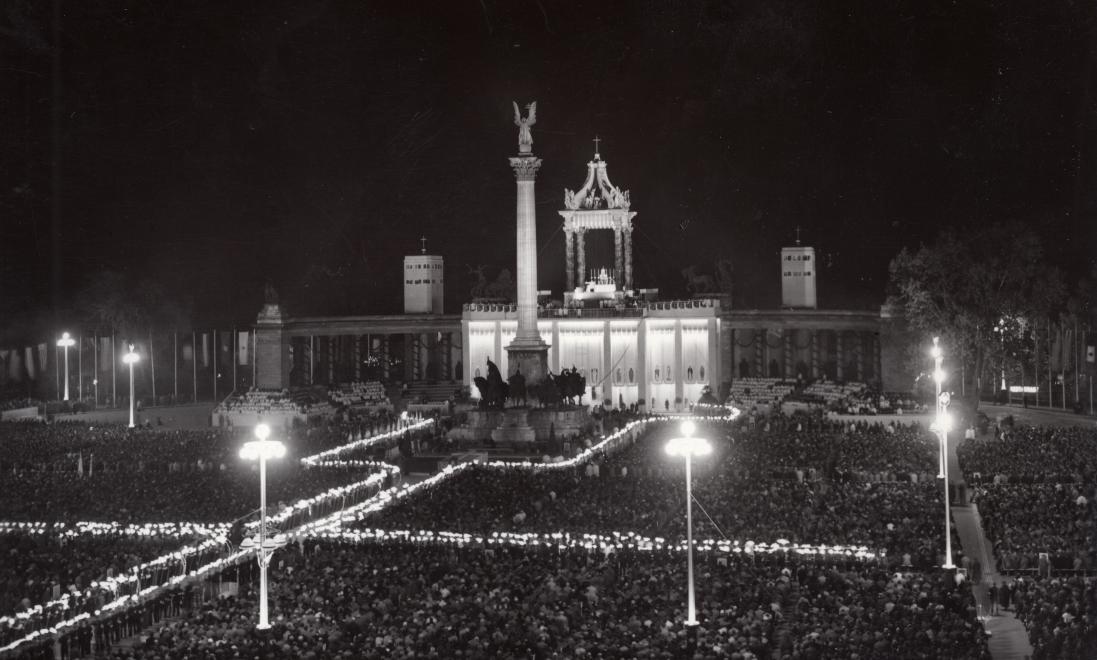
The canopy of the altar erected on Heroes' Square, the main site of the Eucharistic Congress in Budapest in 1938, was a replica of that of the St. Peter's Basilica in Rome (Photo: Fortepan/No.: 131884)
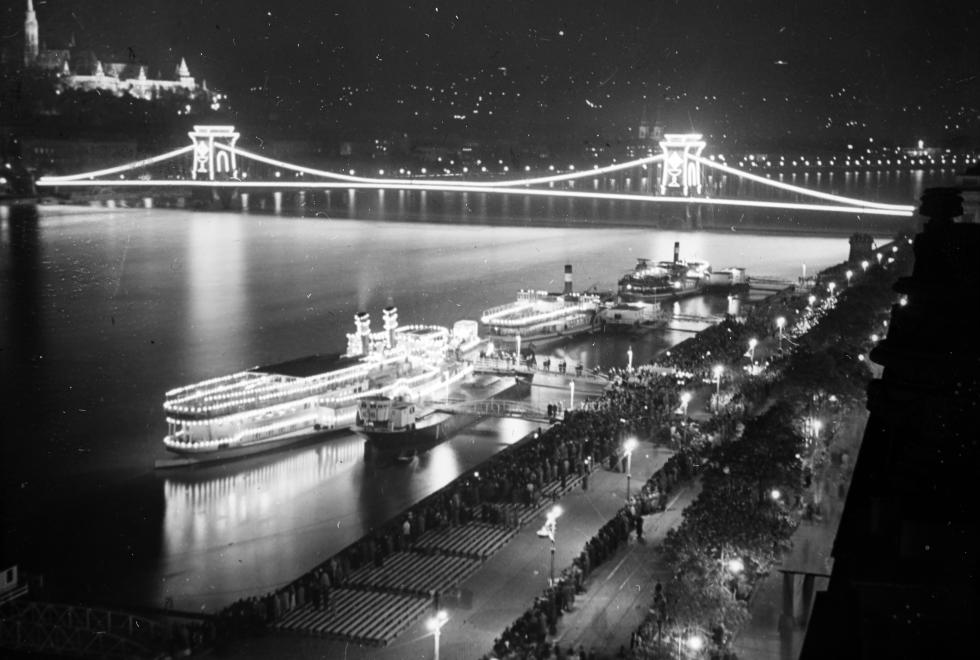
The city dressed in lights for the congress 82 years ago (Photo: Fortepan/Image No.: 134556)
Eugenio Pacelli was elected pope by the concave the following year, 1939, and he took the name, Pius XII. He was also considered a friend of the Hungarians as a pope. He raised his voice in the interests of Hungary several times. In the autumn of 1956, he published three encyclicals and gave two radio speeches about Hungarian events. Two years later, in 1958, his reign ended a period that brought about radical changes in humanity's life. The Second Vatican Council, summoned by the successor to Pius XII, John XXIII, reflected on these changes.
Eugenio Pacelli – the later Pius XII – gives a blessing, accompanied by Giovanni Battista Montini on the left side of the picture, the later Pope Paul VI, at the International Eucharistic Congress in Budapest in 1938, on a contemporary postcard
John XXIII, who was born in 1881 as Giuseppe Roncalli, also visited Budapest before his election. The memory of this is preserved in the memorial plaque located in one of the Franciscan church's side chapels in Pest. Roncalli celebrated Mass here on 19 September 1912, when he was in our capital, passing through to Krakow. Unfortunately, less is known about this visit than the earlier ones, but Roncalli visited Budapest at least once more, in August 1930. During the Saint Emeric Year, he attended an international assembly organized by the Missionary Association of the Hungarian Priesthood at the University Church.
Memorial plaque of Pope John XXIII in the Franciscan church in Pest (Photo: Új Ember, 3 September 2000)
John XXIII had a short papacy. He died in 1963, during the Second Vatican Council, which he had summoned. The cardinals chose Giovanni Battista Montini as his successor, who took the name Paul VI. Thus, someone who had previously visited Budapest became the leader of the Catholic Church again. His visit is tied to the 1938 International Eucharistic Congress. He accompanied Eugenio Pacelli to the world event as the Deputy of the Cardinal-Secretary of State. His papacy lasted until 1978. This year, “the year of the three popes,” brought – after the tragically short Papacy of Albino Luciani, known as John Paul I – the first Eastern European pope in the Polish Karol Wojtyła, who on 22 October 1978, became Pope John Paul II.
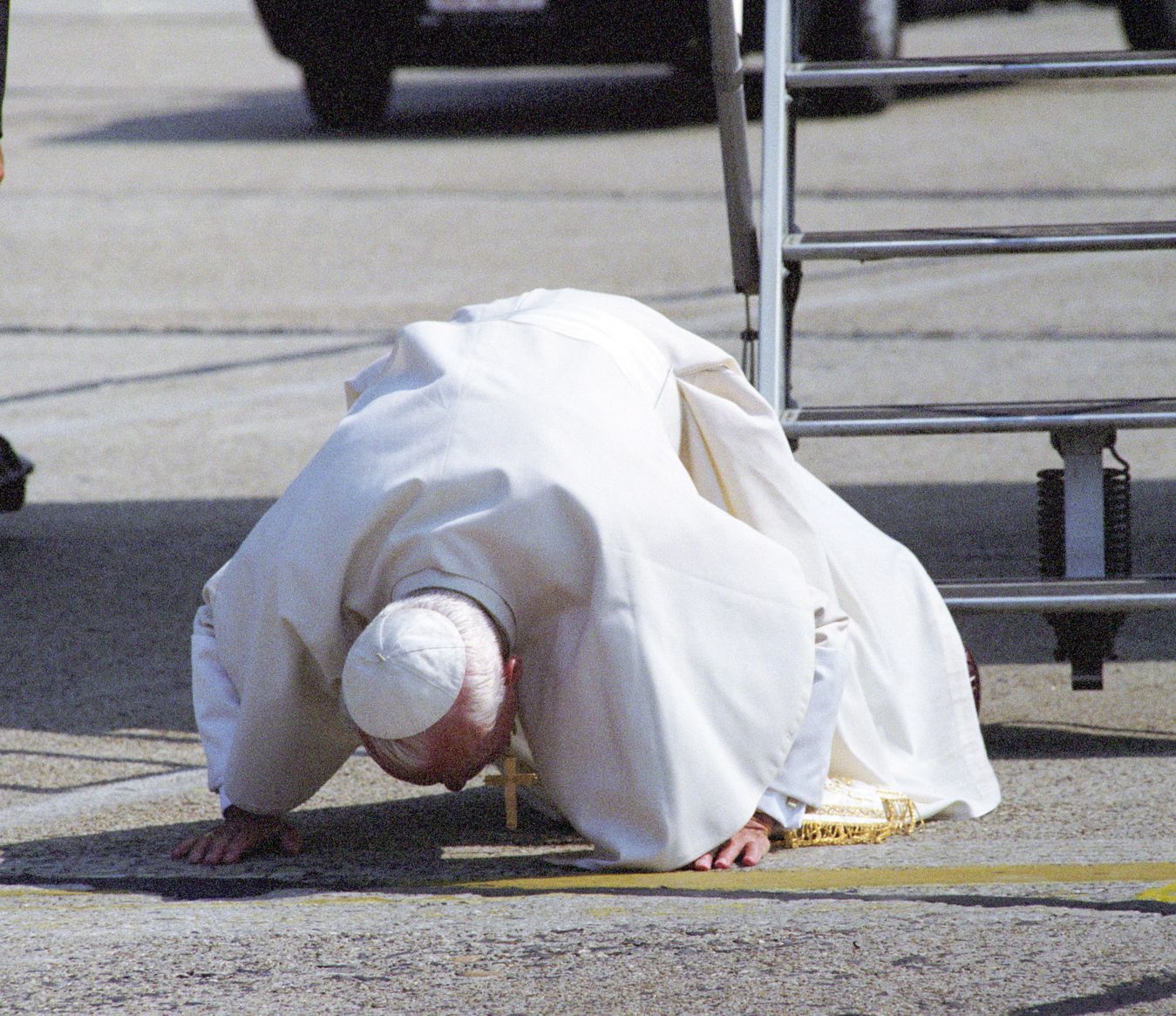
Pope John Paul II kisses Hungarian soil at Ferihegy Airport on 16 August 1991 (Photo: MTI/Lajos Soós)
Although Wojtyła had been to Hungary before, he had not been to Budapest at that time. However, the first official Papal visit to Budapest is connected to him. John Paul II is remembered as the “travelling pope”, who in the globalised world of the late twentieth century, tried to take the message of Christ to all parts of the world. Hungary remembered the 950th anniversary of Saint Stephen's Death in 1988, the tenth year of Pope John Paul II's Papacy. On this occasion, in consultation with the government, Cardinal László Paskai, Archbishop of Esztergom, announced the Pope's invitation to Hungary.
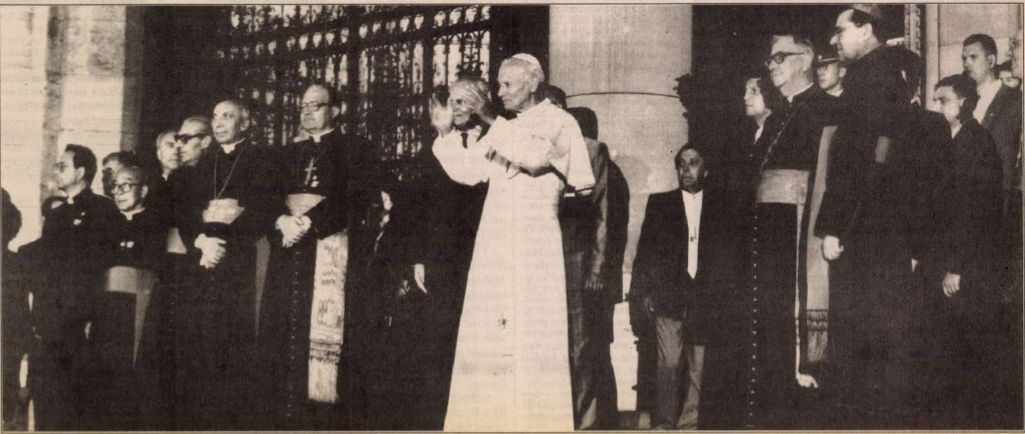
The Pope on the steps of the Parliament on the evening of 16 August 1991 (Source: Pesti Hírlap, 17 August 1991)
The announcement was an important sign of the approaching end of socialism. The Vatican accepted the invitation and John Paul II visited Budapest in 1991. The visit was a length unimaginable today: it lasted five days. The pope arrived in Budapest on 16 August and left Hungary after the festive Mass on St. Stephen's Day on 20 August. A memorial plaque preserves the memory of this Mass on Heroes' Square in front of the Museum of Fine Arts. Pope John Paul II revisited Hungary in 1996, but then his destination was Pannonhalma.
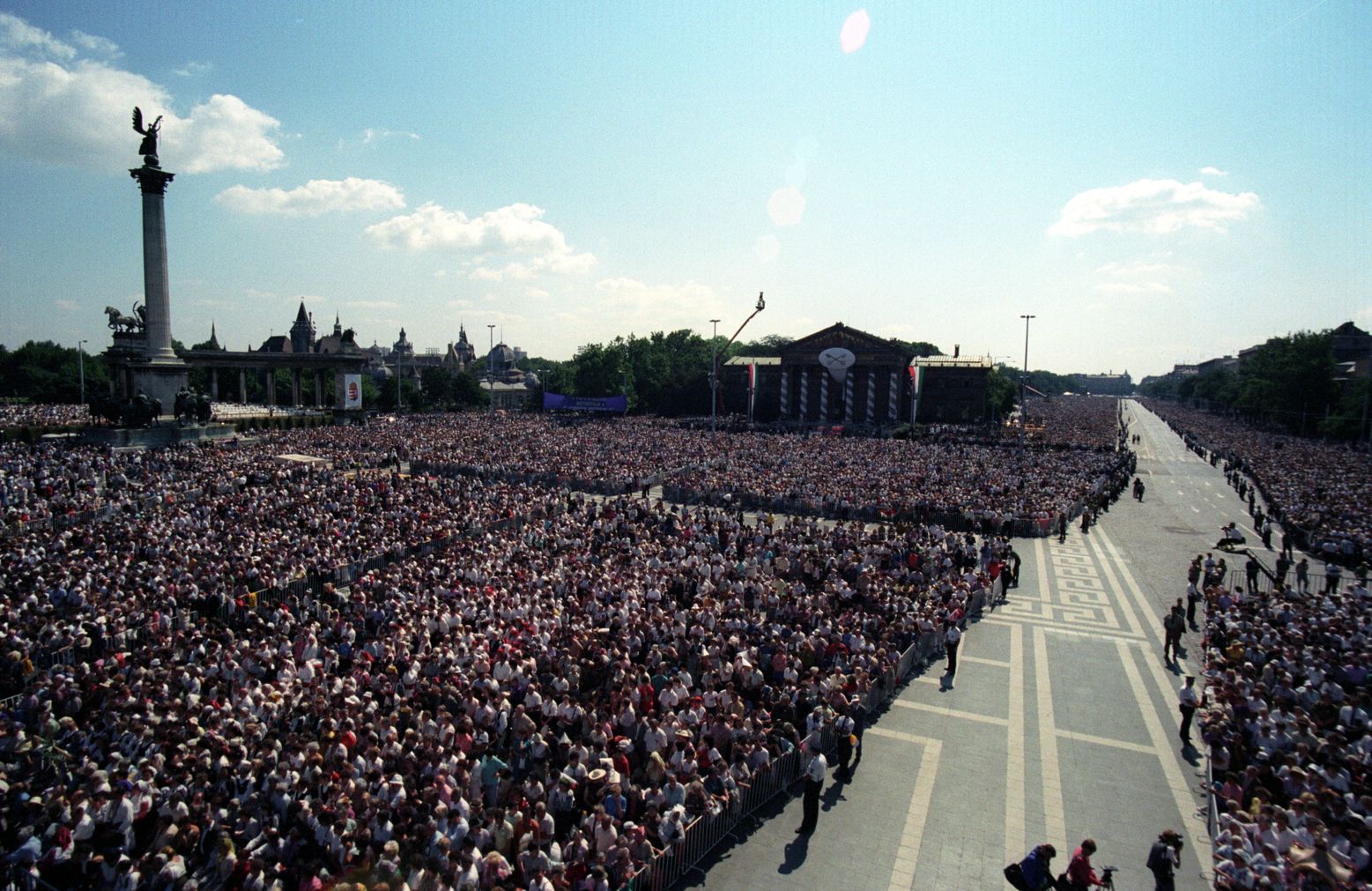
A whole army of believers gathered on Heroes' Square for the papal mass on 20 August 1991 (Photo: MTI Photo/Attila Soós)
Thirty years have passed since John Paul II visited Budapest. The hopeful period of the years of the fall of socialism is history, and today, in 2021, we live in a world that few imagined a couple of years ago. Much is uncertain; perhaps that is why the recent announcement that Pope Francis, who has held the papal office since 2013, will visit Budapest for the closing Mass of the International Eucharistic Congress this autumn is so welcome. During his upcoming visit, the head of the Catholic Church will arrive in a city where, among thousand-year-old Christian memories, he will find small episodes of the history of the papacy from the last century. This is Pope Francis's second visit to Hungarian communities after a visit to Csíksomlyó in 2019.
Cover photo: Cardinal Pacelli, later Pope Pius XII, prays in the Pauline monastery on Gellért Hill (Photo: FSZEK Budapest Collection)

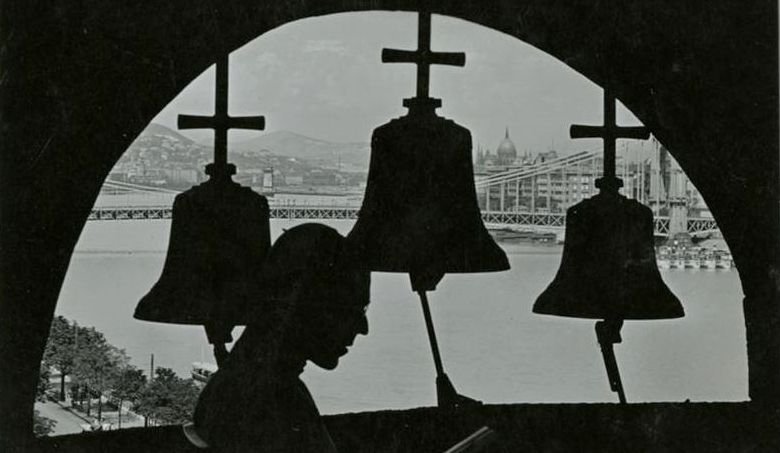



































Hozzászólások
Log in or register to comment!
Login Registration